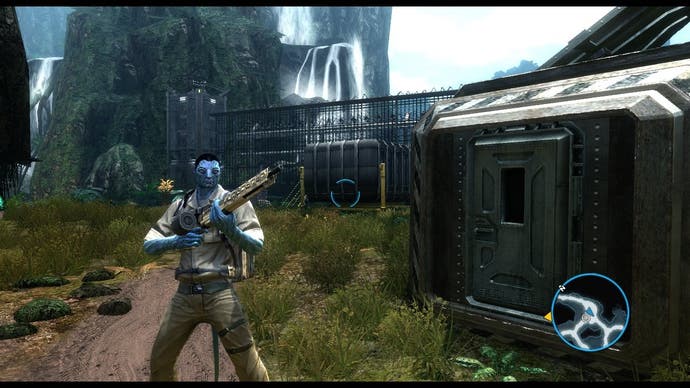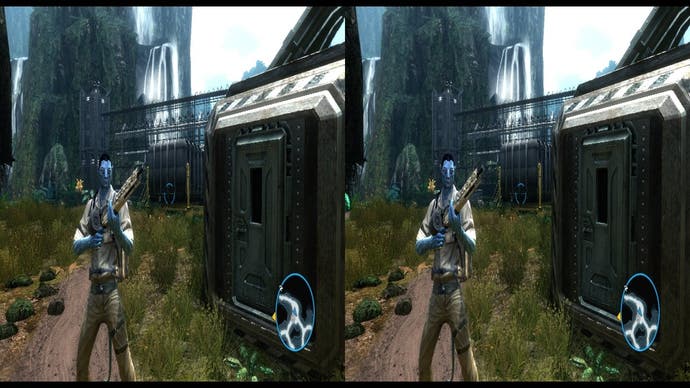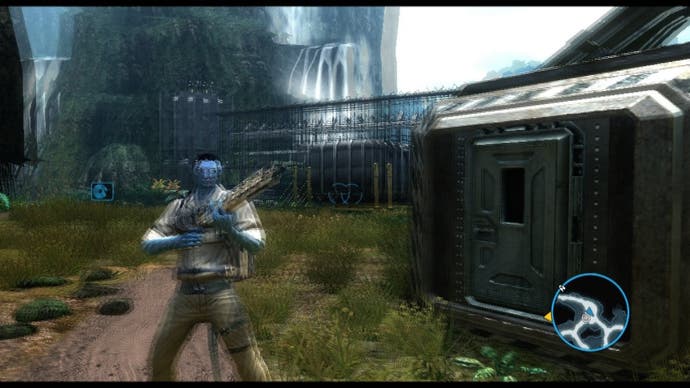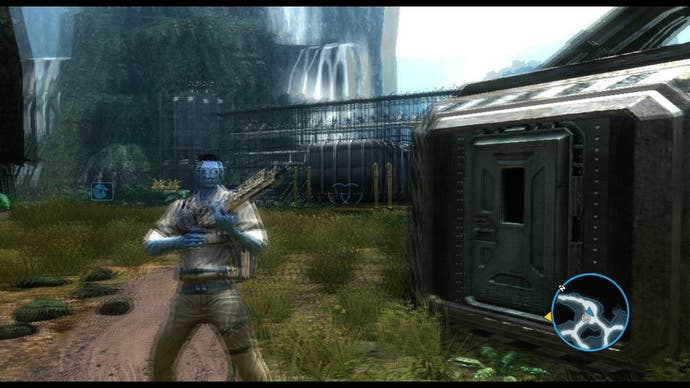In Theory: Is Xbox 360 3D Ready?
Microsoft says "yes". Digital Foundry investigates.
Half-resolution images are something we've already seen with the 3D games currently available on the 360: both Blitz Games' Invincible Tiger and Ubisoft's far more impressive Avatar render in a user-defined choice of non-HDMI 1.4 stereo 3D techniques, but all of them are based on the principle of two distinct images crammed into one 720p framebuffer.
This then gives the PlayStation 3D solution a clear resolution advantage. The 1280x1470 framebuffer format allows for a full 720p resolution - you see it in Super Stardust HD, WipEout HD and also in the forthcoming Gran Turismo 5. However, despite these titles, there are many others which operate with resolution handicaps - Killzone 3 for example operates at half-res in its E3 guise, so while the 3D framebuffer is used, it makes no effective difference compared to a side-by-side Xbox 360 game.




A potential solution for this is to go for a 1080p framebuffer on 360: a 960x1080 image per eye actually offers more resolution than native 720p, the only disadvantage being the use of rectangular pixels, an effect we can simulate by downscaling an existing 1080p game.
Aside from question marks over whether this 1080p format is actually standards compliant with HDMI 1.4, going for a 1080p framebuffer also presents technical issues with the 360 in tiling from the 10MB of eDRAM, plus of course it introduces fill-rate issues too. More pixels need to be generated, meaning more of a load on Xenos.
All true stereoscopic 3D games face an additional challenge over and above the generation of more pixels, as Criterion's technical director, Richard Parr told us in a discussion about the implementation of 3D in the PS3 version of Need for Speed: Hot Pursuit.
"Yes, fill rate, GPU geometry processing and RAM are the big challenges, although CPU is also a potential issue if you haven't designed the architecture from day one to support stereo 3D - and we haven't," Parr says. "Fill rate and RAM can obviously be offset choosing a lower resolution, as Killzone does, but the GPU is still left needing to process twice the number of vertices. "
In theory, the Xbox 360 should be able to match PlayStation 3's 3D performance - when taken as a whole, the two systems are capable of remarkably similar results. However, the 360's Xenos GPU is markedly superior to the RSX in terms of both fill-rate throughput and geometry processing. While PS3 can draw upon the performance of the SPUs to make up the deficit, the question is whether developers - particular on multi-platform titles - will make use efficient of them. This is the sort of implementation you'd really need to see added to the basic architecture of the engine, as Parr suggests.
As Ubisoft's Rob Cooper pointed out, and it already has extensive 3D experience by retrofitting stereoscopy to its state-of-the-art Dunia engine, as used in Far Cry 2 and James Cameron's Avatar.
"There are some special optimisations that were done for the stereoscopic version. Rendering for stereoscopy only impacts your rendering thread and GPU performance," Ubisoft international brand manager Luc Duchaine tells us.
"As such, game logic, physics, etc, don't need to be run twice per frame. To decrease the GPU performance hit, we are re-using the same shadow maps and we also implemented some specific optimisations. Overall, the stereoscopic version's frame rate is close to that of the monoscopic version's."
This is something we can put to the test fairly easily by carrying out like-for-like tests on the game running on both PS3 and 360. In these tests the darker line signifies 2D performance, the lighter line 3D. Tear graphs for 2D are on the top of the graph, 3D on the bottom.
On Xbox 360 the game copes well processing those additional vertices, but it's clear to see that the same game on PS3 - already running at a performance disadvantage in 2D mode - has trouble keeping up. Bearing in mind how many game engines on cross-platform titles run smoother on Xbox 360, there is the very possibility that as 3D gains traction on multi-platform games, the 360 may well end up providing the smoother 3D experience on these titles while PS3 leads from the front with its first party output.
Other developers are planning 3D solutions that aren't true examples of proper stereoscopy but should at least provide a decent approximation of real depth without over-taxing the capabilities of consoles that were never really designed for the kinds of workload 3D demands from what are - by today's standards - pretty old and decrepit graphics chips.
The performance factor is something that can be mitigated and perhaps overcome by adopting a pseudo 3D approach, or 2D plus depth as it should be more accurately described. Instead of two power-sapping passes, the conventional single pass is carried out, but with separation of elements in the scene carried out based on the depth or z-buffer.
